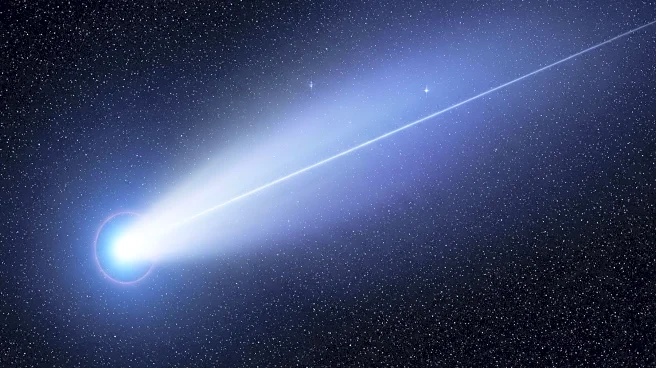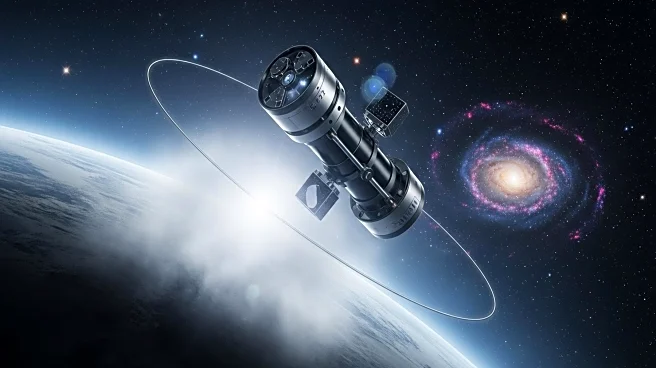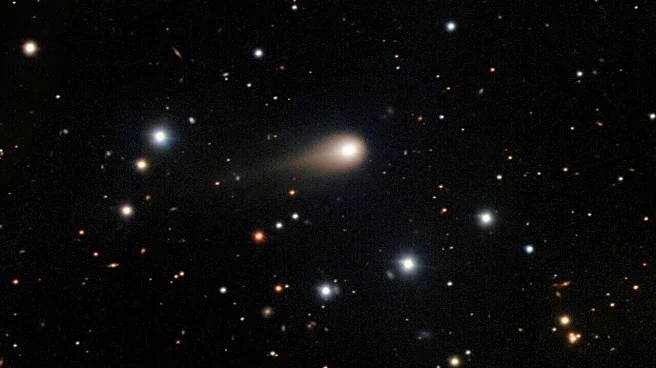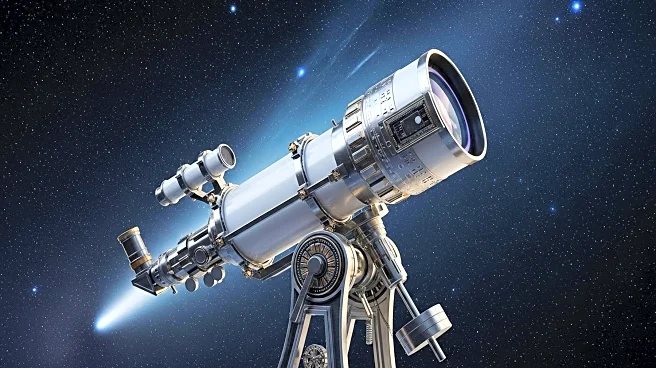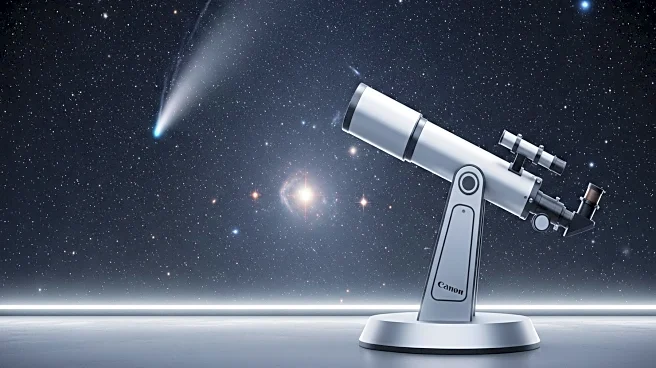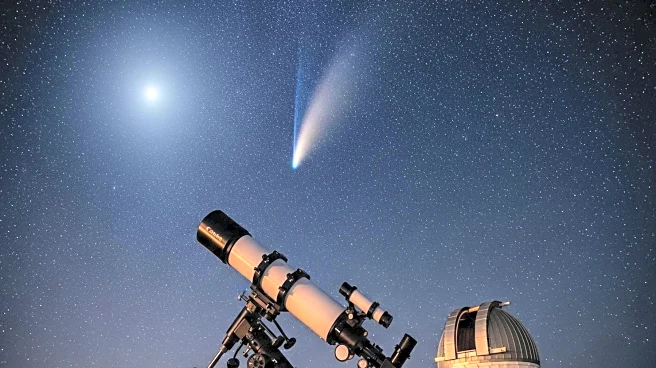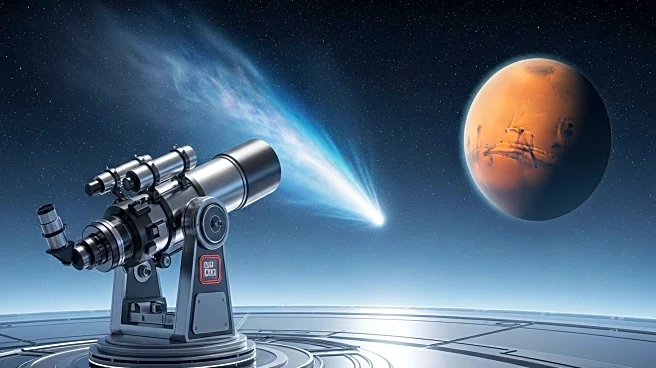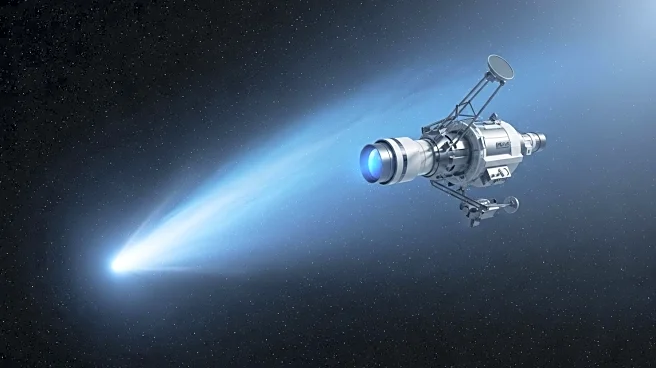What's Happening?
Astronomers and students have captured a striking image of the interstellar comet 3I/ATLAS, revealing its growing tail and glowing coma. The observations were made using the Gemini Multi-Object Spectrograph on Gemini South in Chile, part of the International Gemini Observatory. This initiative, organized by NSF NOIRLab, involved public engagement, allowing students and the public to participate in the observation process. The comet's tail, which spans about 1/120th of a degree in the sky, has become more active as it travels through the inner solar system. The scientific program aimed to collect the comet's spectrum to understand its composition and chemistry.
Why It's Important?
The study of interstellar comets like 3I/ATLAS provides valuable insights into the formation and evolution of planetary systems beyond our own. These comets, originating from outside our solar system, carry material that formed around distant stars, offering a unique opportunity to study the building blocks of other planetary systems. The public engagement aspect of this initiative also highlights the importance of involving the community in scientific discovery, fostering interest and education in astronomy. The findings from 3I/ATLAS could enhance our understanding of the diversity and similarities between comets from different star systems.
What's Next?
As 3I/ATLAS continues its journey through the solar system, further observations are planned to study its composition and activity. A follow-up session is scheduled for November 2025, when the comet reemerges from behind the sun. This session will involve the public in the control room of the Gemini North telescope in Hawai'i, providing another opportunity for community engagement and scientific exploration. The continued study of 3I/ATLAS will contribute to the broader understanding of interstellar objects and their role in the cosmic landscape.


